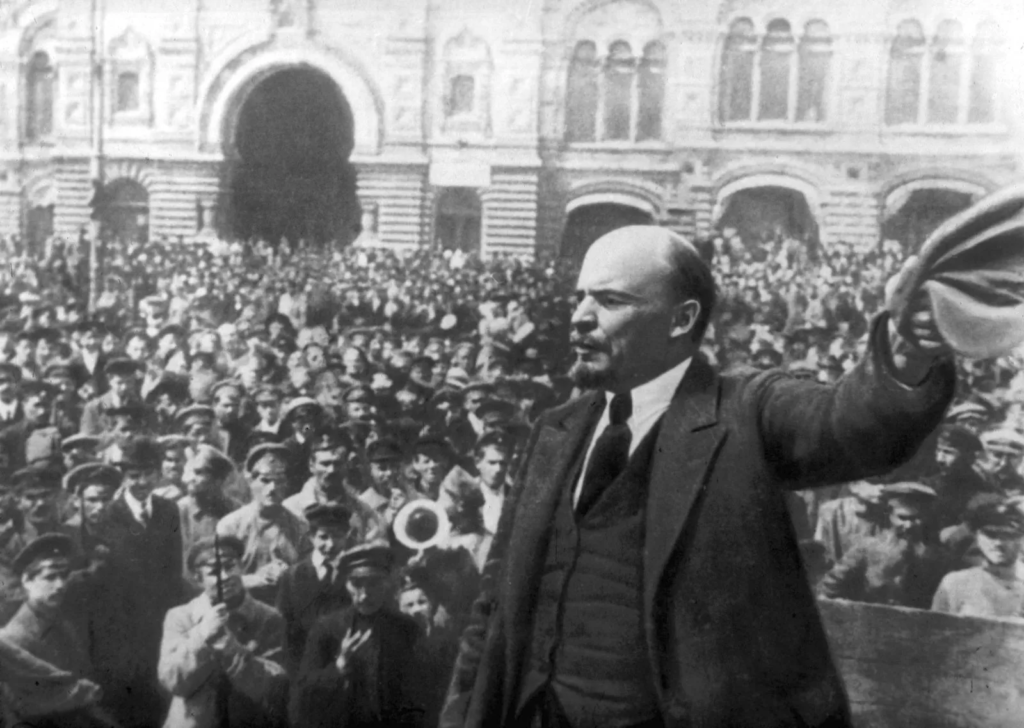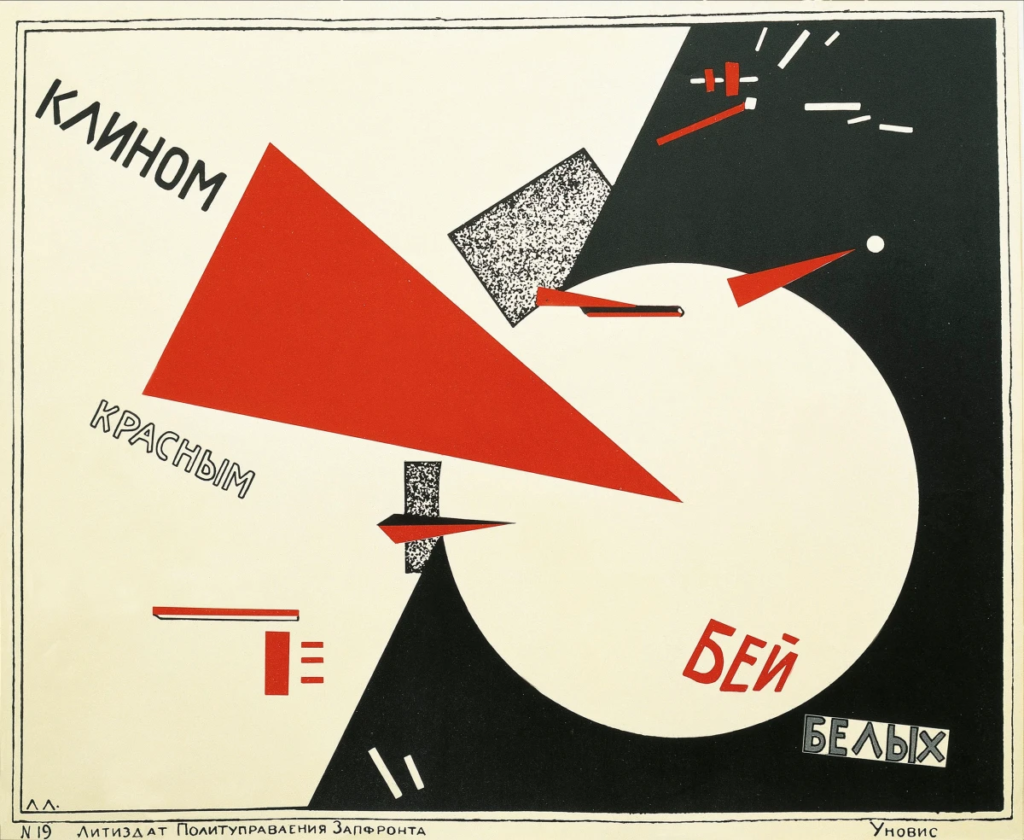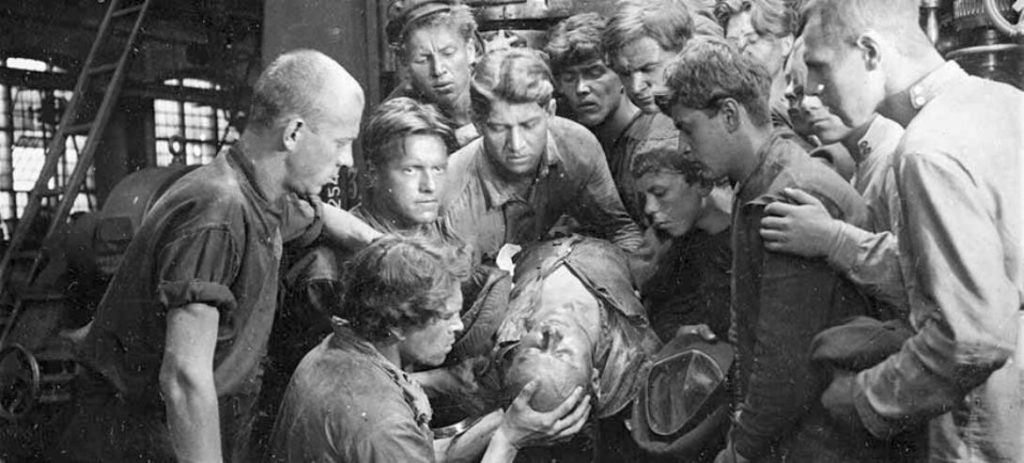
- How the political, social and economic upheaval created by the aftermath of both the Russian Revolution and WW1 affected the production and content of classic Soviet Constructivist Cinema.
Constructivism begun as the art of a young Soviet Union after the revolution of 1917. The movement was conceived of out of a need for a new aesthetic language; one benefitting of a progressive new era in Soviet socialist history. Lenin encouraged propaganda through film, and this led to many works that involved anti-tsarist propaganda and empowerment of workers.

2. Describe some of the stylistic conventions associated with the expressionist art movement. Post some additional examples of Constructivist art.
Pure geometric forms, linearity, symmetry, repetition, simple, sans-serif fonts, the dominance of red and black, photomontage are all stylistic conventions of the ‘Soviet Constructivism Movement’

3. How does the Gerasimov Institute operate now?
The Gerasimov Institute is the oldest Film school in the world. Its present operations today consist of being one of the most influential film schools in Russia.
4. Three films identified by critics as classic Constructivist films
The New Babylon (1929)

The End of St. Petersburg (1927)

Strike (1925)

4.